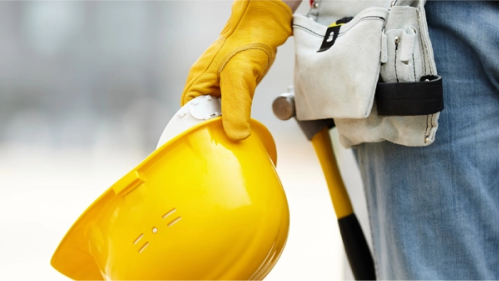Products - BRE Group
Products and tools for smarter solutions
LPCB
The Loss Prevention Certification Board (LPCB) works with industry and government to set the standards for fire and security products and services. Its aim is to ensure these products perform effectively. LPCB offers third-party certification which confirms that products and services have met and will continue to meet Loss Prevention Standards (LPSs).
Explore the LPCB

BREEAM
BREEAM is a trusted mark of sustainability for buildings and communities around the world. Since 1990, our third-party certified standards have helped improve asset performance at every stage, from design through construction, to use and refurbishment.
Explore BREEAMBREEAM Infrastructure
BREEAM Infrastructure (formerly CEEQUAL) is the sustainability assessment, rating and awards scheme for civil engineering projects. Part of BRE since 2015, BREEAM Infrastructure operates alongside BREEAM. It promotes and enables the achievement of high environmental and social performance in civil engineering, infrastructure, landscaping and public realm projects.
Explore BREEAM Infrastructure

YellowJacket
YellowJacket can help you improve health and safety on construction projects.
Explore YellowJacketSmartWaste
SmartWaste is a data and information platform to help you manage waste, cut development costs and reduce environmental impacts. It supports the construction, infrastructure and property development industries to achieve their sustainability goals.
Explore SmartWaste

Home Quality Mark
The Home Quality Mark (HQM) is the badge of a better home. It enables house builders to showcase the quality of their homes, and to distinguish them from other houses on the market.
Discover Home Quality MarkDigital sustainability tools
We have a growing suite of digital tools to help you improve the sustainability of your projects and reduce their environmental impact.
Reduce the environmental impacts of shop fittings.
Shop fittings have important environmental and cost implications, as they are regularly replaced and discarded – usually to landfill. With BRE’s Low Impact Sustainability Tool (LIST), designers and manufacturers can use more sustainable materials and designs. It also helps retailers to select equipment in line with their sustainability goals.
LIST was developed in partnership with Marks & Spencer, design consultancy Fitch and point of purchase company DisplayPlan. It is based on BRE’s cradle-to-grave environmental profiles methodology, which provides a scientifically-based assessment of all aspects of environmental impact. It is easy to use (with no technical knowledge needed) and can be applied to every form of shop fitting equipment.
Integrates Life Cycle Assessment, Life Cycle Costing and Building Information Modelling.
IMPACT measures the embodied environmental impact and life cycle cost performance of buildings. It’s integrated into 3D computer-aided design (CAD) and Building Information Management (BIM) software tools. The results can be used in whole building assessment schemes like BREEAM.
Identify the most cost effective improvements with BRE’s energy assessment tool.
This tool helps residential care homes operators find the most beneficial energy efficiency upgrades to make to their buildings. These improvements can increase the comfort of residents and save money on energy bills. Your return on investment could be as litte as one year.
Measure productivity and improve site efficiencies to increase sustainability.
CaliBRE is a productivity tool that helps identify lost time and inefficient processes.
To achieve net zero carbon, it’s vital to lower costs and reduce delivery times where possible. CaliBRE can help identify the biggest cost and time savings, and make the most of environmental, sustainable and commercial opportunities.
The tool diagnoses and quantifies ‘waste time’, non-added-value time and value-added time in working hours. Evidenced by hard data, CaliBRE can improve efficiency and avoid delays.
For local authorities to understand and monitor their housing stock.
BRE’s Housing Stock Condition Database (HSCD) complements BRE’s Excess Cold Calculator (XCC) and Housing Health Cost Calculator (HHCC) tools. It allows local authorities to make targeted improvements in housing conditions, energy efficiency and public health standards. They can also query and update their housing data.
Select and compare makes and models of heat pumps.
A heat pump can provide domestic heating for space and/or hot water. Heat pumps may emit less CO2 than other types of domestic heating systems when appropriately designed and installed.
Domestic Annual Heat Pump System Efficiency Estimator (DAHPSE) gives annual performance estimates for electric heat pumps installed in UK homes. This makes it easy to compare products in different installation scenarios.
Your route to Environmental Product Declaration.
BRE LINA is an online life cycle assessment (LCA) tool that provides a route to gaining an Environmental Product Declaration (EPD). Product manufacturers must be increasingly transparent about the environmental impacts of their products. LINA makes it easy; enabling companies or trade associations to produce LCA results which are uploaded into a BRE Hub to get a third-party-verified EPD.
View the Maxwell Washrooms case study.
The outputs of LINA can also complement an existing Environmental Management System and feed into sustainability rating systems such as BREEAM. In the future, there will also be further opportunities to feed EPD data into Building Information Modelling.
For environmental health practitioners and technical officers to assess excess cold in homes.
The Excess Cold Calculator (XCC) uses information about a home and its occupants to estimate running costs and assess whether the heating system is adequate. It is available online on a subscription basis.
This information has many possible uses. It can:
Inform local authority decisions on remedial actions in enforcement cases
Provide BRE-endorsed evidence in residential property tribunal (RPT) hearings
Aid discussions with landlords about works required
Specify radiator and storage heater sizes
Calculate the cost effectiveness of remedial actions and testing improvement plans.
Case studies from Bristol City Council:
- Choice of remedial work
Quantify and measure the health-cost benefits of housing improvements.
Housing Health Cost Calculator (HHCC) calculates the health costs of hazards in homes, and the savings associated with addressing them. It shows the cost savings to the NHS and wider society from improving health and safety in housing. Local authorities have used this methodology to carry out retrospective health-cost benefit analyses of hazards that have been mitigated thanks to their interventions, including Derby City Council and many others.
